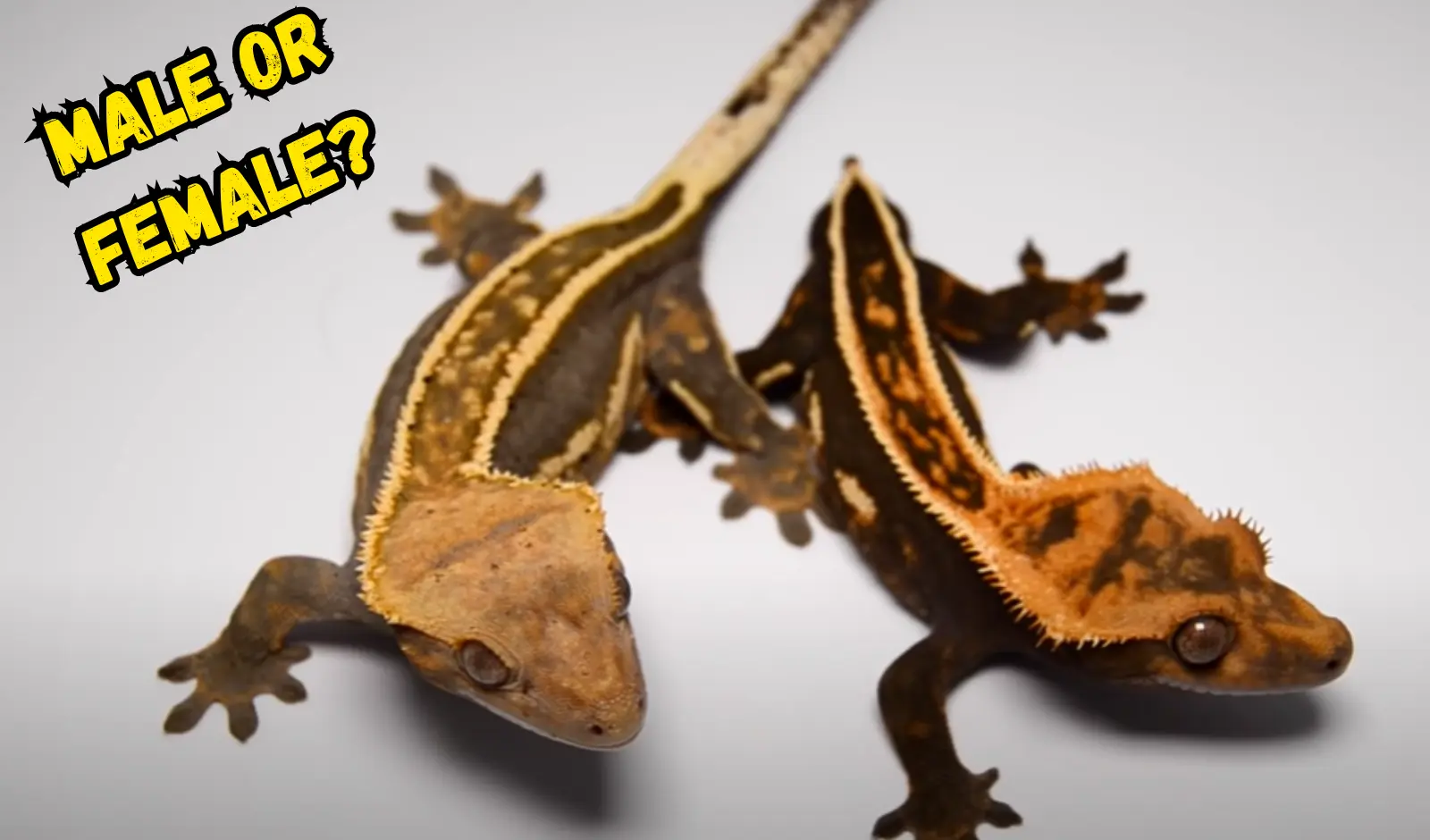Crested geckos are small, cute, easy to care for, and come in a variety of colors and patterns.
However, one thing that many crested gecko owners may not know is how to tell whether a crested gecko is male or female!
Basically, there are three main methods that you can use to identify the gender of your little guy which includes;
- Looking for Hemipenal bulges
- Looking for pores
- And looking for other characteristics.
In this article, I will walk you through the method in detail and provide some tips on how to use it safely and correctly.
Let’s dive in…
Main Method: Looking For Hemipenal Bulges
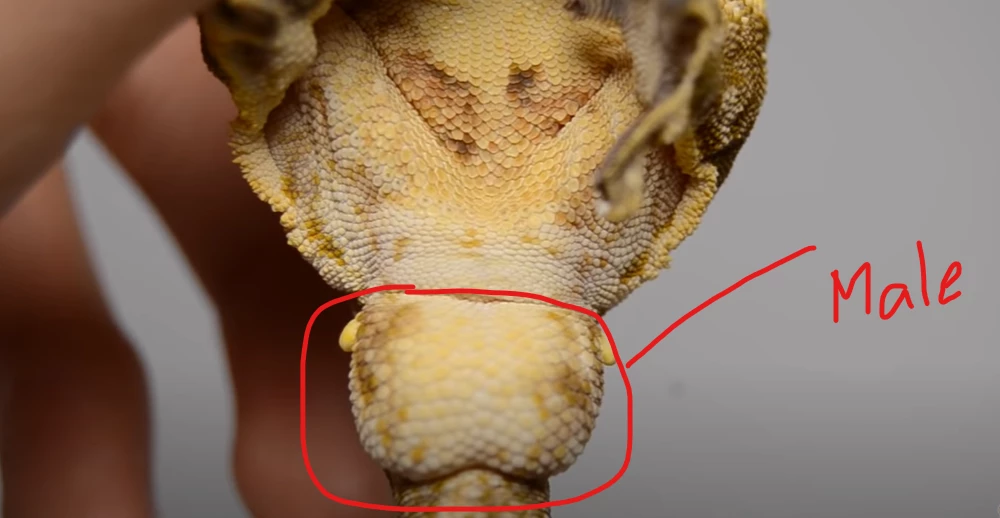
The most reliable way to determine the gender of a crested gecko is to look for Hemipenal bulges.
Hemipenal bulges are two small swellings that indicate the presence of hemipenes, which are the male reproductive organs in reptiles.
Hemipenes are located inside the base of the tail, near the vent (the opening where waste is expelled).
To check for Hemipenal bulges, first, wipe away any dirt or feces that may obscure the view using a moist cotton swab or a damp paper towel.
Then, lift your crested gecko by its body (never by its tail) and examine its underside.
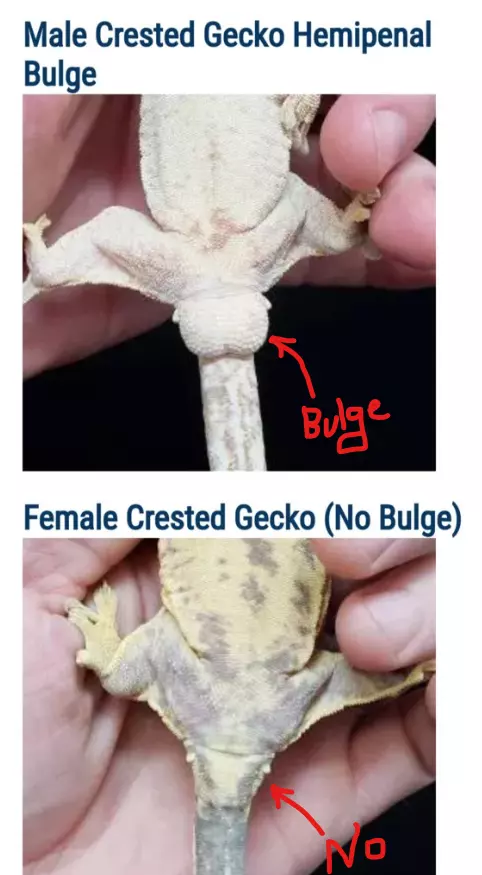
If you see two distinct bulges on either side of the vent, then you have a male crested gecko.
But if you see no bulges or only a slight swelling in the middle of the vent, then you have a female crested gecko.
Tip: the best time to check for Hemipenal bulges is when your crested gecko is at least 6 months old and 15 grams in weight. Also make sure your crested gecko is calm and relaxed, and avoid handling it too much or too roughly, as this can cause stress or injury.
The Secondary Method: Looking For Pores
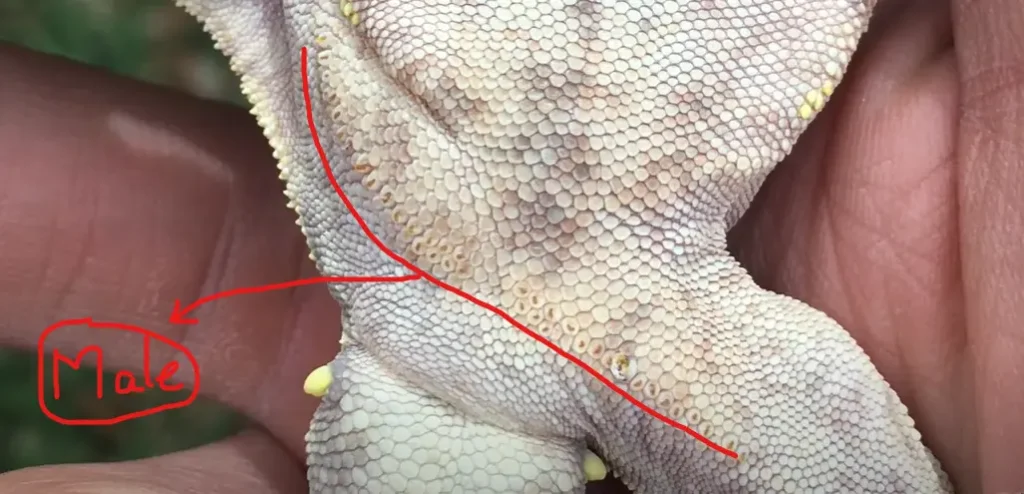
Another way to determine the gender of your crested gecko is to look for pores.
Pores are tiny openings that secrete a waxy substance called femoral gland secretions, which are used for marking territory and attracting mates.
Pores are located on the underside of the thighs, near the vent.
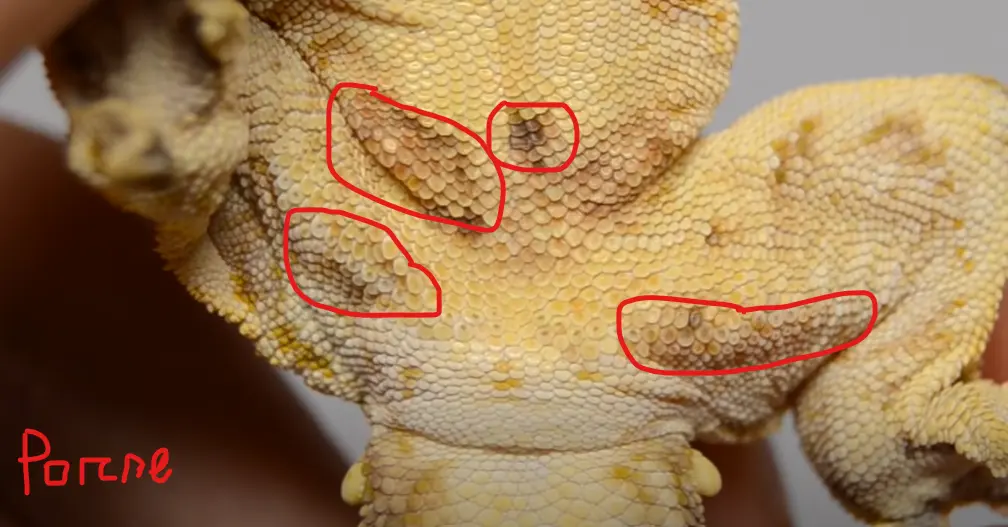
To check for pores, you will need to use a magnifying glass or a flashlight to illuminate the area. You may also need to gently stretch the skin of the thighs to make the pores more visible.
If you see a row of small dots or holes on each thigh (look at the picture), then you have a male crested gecko.
If you see no dots or holes, or only a few faint ones, then you have a female crested gecko.
Looking For Other Characteristics
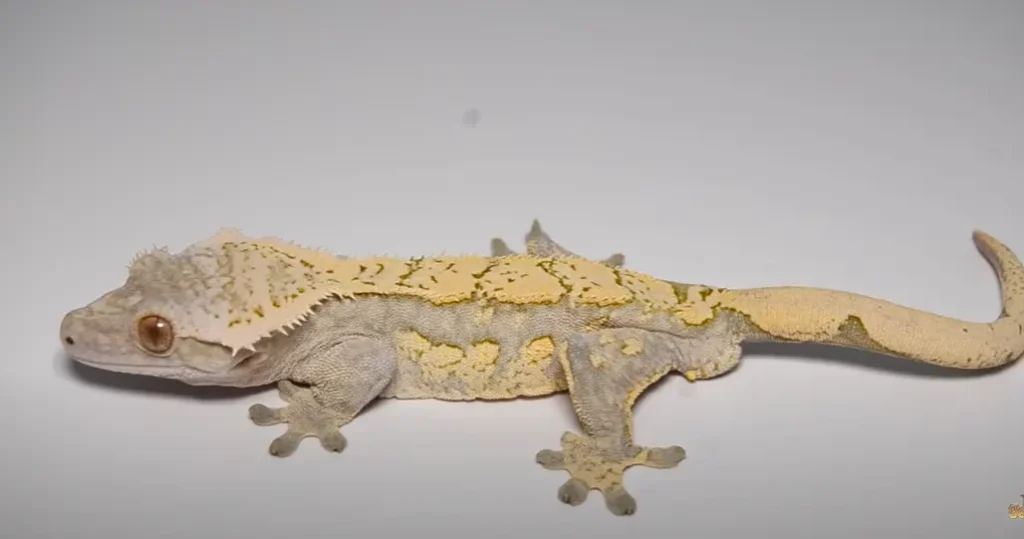
You can also figure out if your gecko is a male or female by checking their head, body, and tail size, shape, and color.
This method isn’t always super reliable because these traits can vary a lot between geckos. It depends on things like their genes, what they eat, how healthy they are, and how old they are.
So, don’t rely solely on this method to tell the gender.
Instead, use it as extra info alongside other methods.
Here are some traits that might hint at the gender:
- Males tend to have larger and more triangular heads than females.
- Males tend to have thicker and longer tails than females.
- Males tend to have brighter and more contrasting colors than females.
- Females tend to have wider and rounder hips than males.
- Females tend to have smaller and more slender bodies than males.
Remember, these traits aren’t a surefire way to tell the gender, and there can be exceptions. Sometimes, females can have big heads or bright colors, and males can have thin tails or dull colors. So, always double-check with the other methods I talked about before you’re sure.
F.A.Q.s
Q: How To Know if Crested Gecko is Male or Female?
If your crested gecko is at least four months old, the easiest way to tell their sex is to look for their Hemipenal bulges.
Male crested geckos have two penises that they keep stored in their cloaca until it’s time to mate.
Their hemipenes give males a uniquely bubble-shaped bulge just below their vent, while females lack this bulge.
Q: Can I use DNA testing to find out the gender of my crested gecko?
Yes, there are some companies that offer DNA testing services for reptiles, including crested geckos.
However, this method is more expensive and time-consuming than the visual methods, and may not be 100% accurate.
Q: Can I breed my crested geckos if I know their gender?
Yes, but only if you are prepared to take on the responsibility of caring for the offspring, which can be very demanding.
You should also research the genetics and health of your crested geckos, and avoid breeding related or unhealthy individuals.
Q: Can I house multiple crested geckos together if I know their gender?
It depends.
Crested geckos are generally solitary animals that do not need companionship from their own kind.
Housing multiple crested geckos together can lead to stress, aggression, injury, or unwanted breeding.
However, some people have successfully kept groups of female crested geckos together, or a single male with one or two females, as long as they provide enough space, hiding spots, food, and water for each individual.

